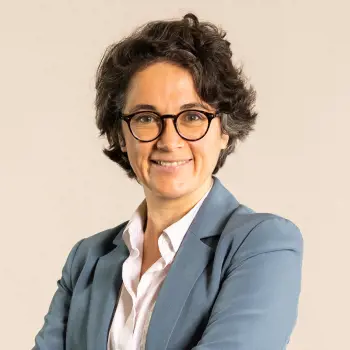 ;
;
As the COP28 kicks off at the end of the month in Dubai, we are paying close attention to this highly anticipated event, albeit mixed expectations.
It’s almost too late for the +1.5°C – last opportunity to walk the talk
This COP is extremely important as it will take stock for the first time on climate actions undertaken globally by all governments since the Paris Agreement. Unfortunately, the main conclusion of this assessment is already known – we are nowhere near the required progress. Long-term global warming currently stands close to +1.2°C compared with pre-industrial times, and the world is currently on track for approximately +2.5°C of warming by 2100[1], even with current pledges to curb emissions. The window for maintaining the +1.5°C target in reach is "rapidly narrowing", the UN says. Nothing new here - now the real question ahead of this COP is: how will governments respond to this stark assessment?
Unfortunately, there are divergent views on the answers that can be brought forward. Several hot topics need to be tackled: the status of fossil fuels, the “common but differentiated responsibilities”, and consequently, the role of developed countries in supporting developing ones. Once again this year, the question of “losses and damages” will be at the top of the agenda, along with the need to specify the contours and functioning of the Loss and Damage Fund established at COP27 - questions that remain mainly political.
What’s needed: to step on the (right) accelerator …
What kind of positive news and progress are we expecting from this COP? While nothing should be taken for granted, we believe that a joint and quantified commitment on accelerating the deployment of renewable energies could be a realistic step forward - and make the event a relative success. The objective is clear and simple, we must triple installation of renewable energies by 2030, as reminded by the International Energy Agency. While the deployment of solar PV is progressing almost in line with a net zero scenario, the last year has been more complicated for wind power in the context of cost inflation and rising rates. Any hint from governments on a reinforcement of their commitments to renewables would be a positive trigger for the industry, and the transition. It is also paramount to accelerate the deployment of renewables in developing countries (beyond China) – thus raising once again the question of financing.
It is clear that due to the location and current geopolitical context, the energy sector will take center stage in Dubai. Sources close to the event indicate that the emphasis is likely to be on decarbonizing operations (scope 1 & 2 emissions) rather than on the much wider indirectly-induced emissions (notably from the burning of fossil fuel - scope 3 “use of sold products”). Let’s be clear: there will be no shift away from fossil fuels if we do not address scope 3 emissions. Furthermore, there will be no meaningful reduction of GHG emissions without shifting away from fossil fuels. This is a scientific fact. It is essential to place scope 3 emissions at the center of the discussion in order to focus on credible alternatives to fossil fuels (renewables, electric mobility solutions), rather than on the sole development of a highly technological vision that tends to be limited to capturing and offsetting carbon.
… before the door closes on us
The IPCC (Intergovernmental Panel on Climate Change) keeps repeating that achieving climate goals requires “drastic change”. It is high time that the COP serves as a beacon in this transition, and manages to address the taboo of a future that is no longer fossil. But let’s not misplace expectations on what COPs, which remain diplomatic events, should achieve. We already have most of the answers and solutions in our hands, as corporates and investors. The vast majority of the technologies that are needed to halve our CO2 emissions by 2030 already do exist and most are already competitive. So no matter what COP28 does achieve or not, the only way to keep the Paris Agreement alive, is to accelerate the reallocation of capital and financing away from fossil fuels, into clean energies. Not tomorrow, not in 2030. Now.
This document is provided for information and educational purposes only and may contain Candriam’s opinion and proprietary information, it does not constitute an offer to buy or sell financial instruments, nor does it represent an investment recommendation or confirm any kind of transaction, except where expressly agreed. Although Candriam selects carefully the data and sources within this document, errors or omissions cannot be excluded a priori. Candriam cannot be held liable for any direct or indirect losses as a result of the use of this document. The intellectual property rights of Candriam must be respected at all times, contents of this document may not be reproduced without prior written approval.
[1] Source: UN Framework Convention on Climate Change report, November 2023
 ;
;
”It is essential to place scope 3 emissions at the center of the discussion
